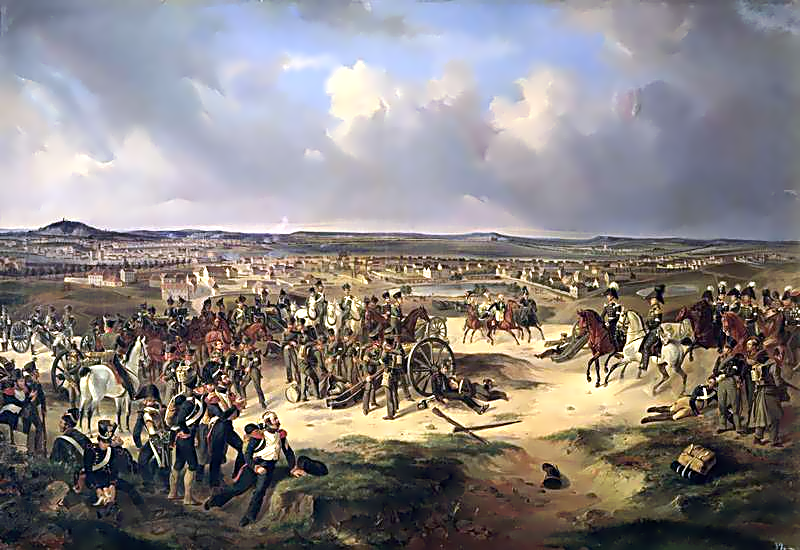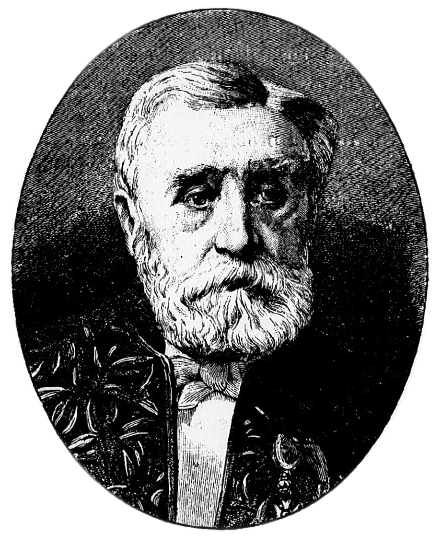
As we try to make sense of the physical world, we’re aided by the discoveries and propositions of those who came before us. Some groundbreaking observations can be easily confirmed through experimentation or mathematical proofs. Others are more difficult to establish in a definitive way, even though they’re useful and generally accepted as true. An example is the principle of Adhémar Jean Claude Barré de Saint-Venant, born on this day in 1797.
Early Studies and Political Turbulence
Adhémar Jean Claude Barré de Saint-Venant was born in Villiers-en-Bière, France, on August 23, 1797, during a turbulent era of French and European history. A gifted student, Saint-Venant entered the prestigious École Polytechnique in Paris in 1813. However, his studies would soon be interrupted.
In 1814, Paris was under siege by a coalition of nations intent on defeating Napoleon Bonaparte. Parisian students were expected to help defend the city, but young Saint-Venant defiantly refused to fight for a French leader he saw as illegitimate. He is even quoted as saying: “My conscience forbids me to fight for a usurper.”

A 19th century painting of the 1814 Battle of Paris. Image by the Military Historical Museum of Artillery, Engineers and Signal Corps, and in the public domain via Wikimedia Commons.
While Saint-Venant avoided battle, in the years that followed, he supported the French military as a chemist at the Service des Poudres et Salpêtres, the ministry that produced gunpowder. In 1823, he was able to resume his studies in civil engineering. He went on to work for the Service des Ponts et Chaussées, responsible for bridges and other infrastructure, until 1848.
Saint-Venant’s Contributions to Structural Mechanics
Throughout his career, Saint-Venant investigated the mechanics of solid bodies, elasticity, hydrostatics, and hydrodynamics, all of which were relevant to his engineering tasks. His inquiries continued during his tenure as a mathematics professor at the École de Ponts et Chaussées, where he succeeded Gaspard-Gustave Coriolis.

Adhémar Jean Claude Barré de Saint-Venant. Image in the public domain via Wikimedia Commons.
Saint-Venant’s impressive body of work includes:
- The shallow water equations (also known as the Saint-Venant equations), used in hydraulic engineering
- Saint-Venant’s theorem, regarding the torsional rigidity of beams
- Saint-Venant’s compatibility condition, which is part of the theory of elasticity involving tensor fields
- A derivation of the Navier–Stokes equations
- And of course, Saint-Venant’s principle
Laying the Groundwork for Structural Analysis
Saint-Venant first articulated his namesake principle in 1855, stating:
“If the forces acting on a small portion of the surface of an elastic body are replaced by another statically equivalent system of forces acting on the same portion of the surface, this redistribution of loading produces substantial changes in the stresses locally, but has a negligible effect on the stresses at distances which are large in comparison with the linear dimensions of the surface on which the forces are changed.”
Saint-Venant, Mém. savants étrangers, vol. 14, 1855.
Many prominent researchers, including Joseph Valentin Boussinesq, Richard von Mises, and Richard Toupin, later articulated and expanded upon Saint-Venant’s observation. Today, Saint-Venant’s principle is a familiar tool for structural engineers and found in most structural mechanics textbooks, though often not explained well. If you’re curious about Saint-Venant’s principle and how to interpret and apply it, I recommend checking out my colleague Henrik Sönnerlind’s blog post on the matter (“Applying and Interpreting Saint-Venant’s Principle“).
The Lasting Legacy of Adhémar Jean Claude Barré de Saint-Venant
In his time, Saint-Venant was an engineer focused on practical problems, as well as a theorist who helped strengthen the mathematical foundations of structural mechanics. His career combined groundbreaking theoretical inquiry with practical engineering work.
In gratitude for his discoveries, and their still-unfolding implications, we wish Adhémar Jean Claude Barré de Saint-Venant a happy birthday!
Further Reading
- Learn more about Saint-Venant from the following resources:
- Read about other scientists who worked in civil engineering on the COMSOL Blog:



Comments (0)